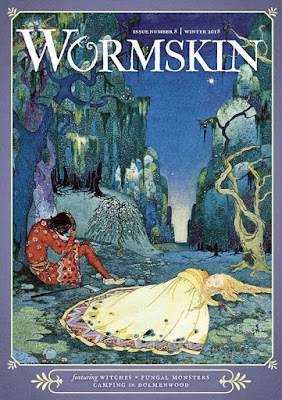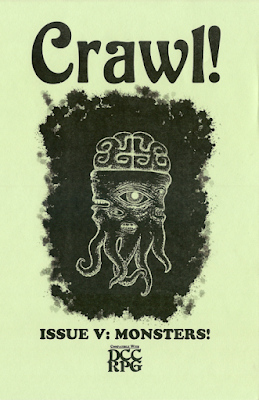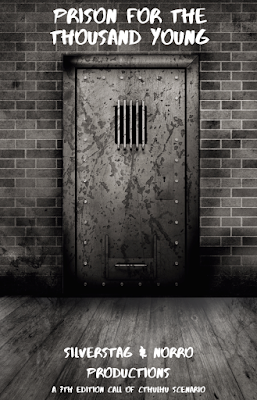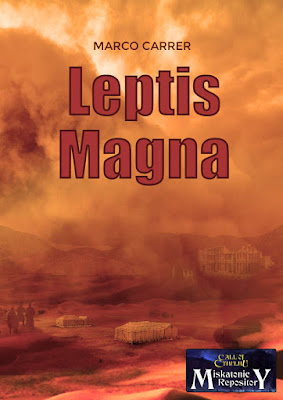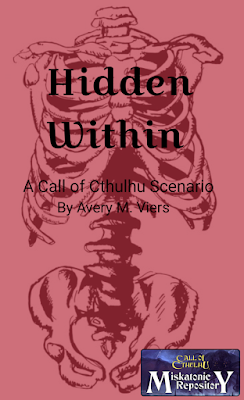Features / August 28, 2020

ROBERTS: I started watching (mostly rewatching) disaster movies old and new about a week into lockdown, which I suppose makes perfect sense. The genre turns on spectacle and catharsis, but it also pacifies: no matter how bad the real world gets, it could always get worse—so be grateful that it’s not worse. But make no mistake: Irwin Allen and co. make perfectly clear that bad stuff is on the way, always, and we have to be prepared to persevere. “Shit happens” is embedded in our national lexicon. Take your lumps. Deal with it. Just do it. Be a leader, not a follower. It is all so bedrock America that I hardly care if it’s bullshit anymore—bullshit precisely because it’s allowed to be true. We live in a land where where there are only winners and losers: those who can buy their way out of catastrophes—catastrophes that are often preventable or mitigable but made inevitable by systemic bondage to profiteers, by explicit repudiation of the idea of community—and those who can’t.
It occurred to me last week, as I rewatched The Poseidon Adventure for the umpteenth time—inarguably the peak (heh) of the genre—that it is a representative piece of American mythology, as indispensable in its way as Red River or The Big Sleep or Easy Rider. “Hell, upside down,” the theatrical poster gushes. “Life is up there,” says the Luciferian Reverend Scott to resigned Belle Rosen, as if in response. “And life always matters. Very much.” It is the Dantean journey that gives the film so much gravitas, but the (dis)honorable Reverend, in his pre-catastrophe sermon, channels the Duke, not the poet:
So what resolution should we make for the new year? Resolve to let God know that you have the guts and the will to do it alone. Resolve to fight for yourselves, and for others, for those you love. And that part of God within you will be fighting with you all the way.
This ain’t the RMS Titanic, in other words. Americans don’t play show tunes as the ship goes down. No. We clamber up enormous, tasteless fake Christmas trees, traipse through fire and corpses, and swim through flooded engine rooms to get to the cast iron hull, just as the improbable rescue team (never give up, never surrender!) is set to blowtorch a three foot square passage to sunshine-y safety.
MCKENNA: I have vague memories of watching The Poseidon Adventure for the first time in its debut showing on British television over the 1979 Christmas holidays, and it felt like I was being initiated into a new understanding of the way the world worked. Back then, the UK was a very different place—stoic certainly, but a lot less given to mors tua vita mea walk-it-off lead-don’t-follow bullishness than our increasing alignment with you lot over the last few decades has made us. Plus it was—for the most part—relatively safe and stable-seeming. So the lesson I took from The Poseidon Adventure, call it the Irwin Allen Doctrine if you will, was that stability is fragile and that in any moment, reality can be turned upside down (bum-tish!). The takeaway of my child-of-’70s Britain brain was not the perhaps more logical “be brave, fight on, struggle through” preppery conclusion, but a kind of anxious resignation to disaster that, after the many disaster movies I would see over the following years, would be taken to its logical extreme in 1984 with the BBC’s nuclear war disaster movie Threads. Weird how the same stimulus can provoke such different reactions when the context is different.
Watching it now for the first time in decades, I’m struck by several things. Firstly and most superficially, Roddy McDowell’s atrocious Scottish (if it is even supposed to be Scottish) accent, and the awe-inspiring shittiness of the model work that opens the film, which looks appalling on a telly, so it’s inconceivable that on a cinema screen it didn’t provoke howls of outrage. I’m also struck by how great Pamela Sue Martin and Stella Stevens and Ernie Borgnine (as Linda and Mike Rogo) are (predictably, it’s Borgnine who pulls out the one moment of genuine pathos in the whole film), and by how much I’ve missed Shelley Winters. But mainly I’m struck by what a dick the Rev. Scott is. Sure, he gets his little gang of followers—well, some of them—up to the propeller shafts, but seemingly as much by luck as by any actual plan or talent above and beyond not giving up. How many other little groups of survivors led by some other manic Hackman convinced he knows the way are trying to do the same thing and don’t make it? The film makes it easy for itself by following the only one that does (we know it’s the only one because the rescue helicopter pisses off as soon as they’ve emerged), but the whole thing feels like we’re watching someone—the Reverend Scott—grandstand their way through their issues with their own feelings of impotence and frustrated. I suppose it’s kind of in the cards that this is the case, though, given the way Scott tells the congregation at the sermon Kelly mentions above that “God likes winners.” I mean, it’s not like I’m much of a Bible student, but God likes winners? I thought he was planning on giving the planet to the meek?
Perhaps the whole thing is implicitly seen from a winner-loving God’s-eye POV, keeping the focus on the people that God likes so much while the losers all get smashed to bits. What do you think, Mike? Does that feel like something that was echoing through these films, until Threads proposed a disaster in which surviving was actually worse than dying?
GRASSO: For me personally, 1970s disaster movies have more often been something to analyze rather than enjoy; they do speak so clearly to a certain high American imperial bloat: bigger casts, bigger spectacles, longer running times, bigger publicity campaigns, cheesier gimmicks. So I think that’s why, when re-watching the arguable Big Three for this piece—the original Airport (1970), The Poseidon Adventure (1972), and The Towering Inferno (1974)—I was a little shocked to remember how downright boring all three of them are. Nothing specifically against the star-studded (and undeniably talented) casts, but so many of the actors seem to be content to hit their marks and pick up a paycheck. With the exception of standouts like George Kennedy in the Airport series (who goes from salt of the earth mechanic in Airport ’70 to “largely in on the joke” full airliner captain by the time The Concorde… Airport ’79 staggers across the finish line), or the unbeatable (yet somehow still slightly disappointing!) ¿quién es más macho? duo of Paul Newman and Steve McQueen in Inferno and the always, er, compelling Shelley Winters in The Poseidon Adventure. These big Hollywood names, a good number of them washed up and forgotten at the time, just look slightly on the side of mortified that their careers have brought them to this. But again, as you guys mentioned, these movies were also the biggest box office hits of their day, the star-studded, effects-laden blockbusters that ruled the cinemas and drive-ins before the coming of Star Wars. What gives?
I could trot out the usual rigmarole about these films speaking to a Nixon-era sense of American decline, of watching the technological wonders we’d built during the Cold War begin to decay and fall apart—and don’t get me wrong, that’s a really solid analysis! But I think there’s more to the ’70s disaster film than just a deeply buried sense of American masochism. Because there is that Rev. Scott-inspired sense of “we’re going to beat this thing with good old American know-how and good old American aggression” threaded throughout all these movies. Whatever else has been said ad infinitum about the supposed malaise of the 1970s, we know now, a half-century later, that most Americans literally never had it better economically than when these movies came out. And I think on some level, the writers and producers knew that. They knew that living in American society as a patriotic white American male between 1970 and 1975 was easy—possibly the easiest it had ever been, despite the dual prongs of Vietnam and Watergate—and that Americans on some level can’t abide the living being easy. The restless American needs conflict, he needs adversity, he needs a sinking ship or a burning building or a sudden earthquake to fight against to really prove we’re winners.
There is one thematic element of the early genre that is worth praising from a political perspective, though, and that’s the multi-level plots and the innocent bystander characters who get to prove themselves and their mettle during the disaster. Every B-level star or Golden Age of Hollywood re-tread gets a juicy character development scene or a subplot, and while, yes, the stars are the stars and the heroes are the heroes, in each one of these movies there are plenty of Just Plain Ordinary Folks among the square-jawed heroes. Maybe it’s not socialist realism or Brechtian dramatic deconstruction, but it’s the closest that the American blockbuster can bring itself to provide: a relatable, identifiable proxy for the ordinary schlub or harried housewife in the audience. It’s small “d” democratic in the best tradition of American literature and drama, and I unabashedly love it as a trope, whether it’s the aforementioned unexpectedly heroic Winters in Poseidon or Geneviève Bujold in Earthquake or countless other examples, ordinary doughty folks (including plenty of women!) get to save lives and be heroes. That seems like a fine and necessary moral and political lesson to come out of these things.
ROBERTS: I think these films are democratic in more ways than one. In The Towering Inferno, it’s the greedy developer who refuses to evacuate the building because he has a big deal at stake; in The Poseidon Adventure, the owner’s agent orders the Captain to push on at full speed to save money, rendering the ship unballasted; in Earthquake, architect Stewart Graff puts his firm in jeopardy by demanding a prize client pay for necessary safety measures in his new office building; in Twister, the bad guys in their shiny black vans are “in it for the money, not the science”; in Dante’s Peak, the town’s business leaders don’t want to evacuate because they’ll forfeit the windfall of the annual Pioneer Days Festival (just as the Mayor in Jaws refuses to close the beach during the summer tourism peak). Is this sounding familiar? Anyway, the list goes on. In the 2000s and beyond, climate change is often the culprit (with all the histrionics of an Aaron Sorkin script), and once again greed is at the core (heh) of the resulting cataclysm. Life may matter “very much” to Reverend Scott, but his country (and God, apparently) routinely sacrifices it so that the rich can stay rich.
These films also display and require shared sacrifice, often on a global scale—an unthinkable suggestion in America since at least the Vietnam War (bone spurs, anyone?). The rich can’t buy their way out of a burning (The Day the Earth Caught Fire) or freezing (The Day After Tomorrow) planet, though sometimes we have a distinctly undemocratic “ark” situation (When Worlds Collide, Deep Impact, 2012—yes, I watched it!), where the elite or “chosen” few get the chance to start a newer, better world. I think that’s why Richard has a different reaction to these films: Brits had no choice but to share the devastation and deprivation of World War II, among other tragedies.
The phrase “washed up” (heh) got me thinking as well. Not just in terms of the past-prime-time actors, who give the audience a sense of stability and hope as the cinematic destruction unfolds, but in terms of the country itself, as Mike alludes to above. As Rambo and his ilk fought and won Vietnam retroactively in the ‘80s, so the disaster films of the ‘70s gave us an enemy that was worthy of us, an enemy we could bear losing to, an enemy that could not be sympathized with—and at the same time an enemy we could claim a moral victory against.
MCKENNA: That’s a thought that struck me too, Kelly—how differently these films must have played in the States to the way they did everywhere else, even somewhere as nominally similar (as in, not at the time actually that similar at all) as the UK. Obviously a lot of the same mechanisms would have been at play, but it seems to me that—apart from the emphasis on thrills and catharsis—the focus over our way at least was perhaps more on the “disaster” part than the “movie”: on the implicit warning against hubris that set the superstitious protestant wiring buried beneath the country’s modernizing surface humming.
But then, only America could have afforded to make this kind of thing as a throwaway entertainment anyway: even second-tier Irwin Allen-ery would have been beyond the coffers of our national film industry, and presumably most others too. Only the US could assemble the means necessary to create mass acts of propitious magic showing the nation’s chutzpah win out over bees or bigfoot.
It’s no coincidence that the disaster movie came of age in a period of history when popular culture in all its forms was beginning to accept that the Earth was not simply an endless source of resources for us to to burn or melt down into aftershave bottles, and that if we kept hacking away at it, it might start hacking back. That schism in belief feels like it’s seeped deep into the bedrock of the zeitgeist since then, and the disaster movies of the decades that followed the ’70s have reflected that shift away from the surface. I’ve watched 2012 too, and, like so many of the modern disaster movies I’ve seen, it’s profoundly unsatisfying. For all that the special effects and stunts of the originals were considered epic at the time, there’s a staginess to the classic disaster movies that I think is an intrinsic element of their power (which makes me wonder about the parallels between the American disaster movie and the British tradition of pantomime, where marginal celebs and not-quite-has-beens are brought out around Christmas time to camp up old tales). A truly realistic disaster movie doesn’t quite hit the mark—the staginess, perhaps like the model ship in The Poseidon Adventure, is an essential part of the package, as is the weird bus-tour melange of character actors and stars. Those TV Guide-of-yesteryear casts you point out, Mike—they’re comforting. An American extrapolation of Brian Aldiss’s “cosy catastrophe,” which, like Kelly says, amps up the nation’s psychological needs.
GRASSO: As far as more contemporary disaster movies go, documentarian Adam Curtis had a stunning bit at the center of his most recent film, HyperNormalisation, where he presents a series of scenes from ’80s and ’90s disaster movies featuring titanic explosions (replete with crowds looking up at them in stunned awe) that seemed to spookily and accurately predict the traumatic images of destruction we all remember from September 11. Alien invasions, climate change-driven tidal waves, asteroids and eruptions from the Earth’s core—all these apolitical disasters fed into a spectacular idea of what our collective societal rupture point might look like. And then, suddenly, it all became real. This sort of special effects spectacle was echoed in the city-destroying pillars of light in the post-9/11 superhero film. Of course, with the 2000s superhero film, the “good guys” now have their own superhumans, wealthy tycoons, or secretive military organizations sporting a team of emotionally-stunted misfit recruits to fight against the city-destroying bad guys. The ordinary schlub from the 1970s is now nothing more than a bystander with no agency and certainly no impact.
The 1970s disaster flicks are necessarily smaller-scale, in both spectacle and stakes. I think back to how I first saw many of these films produced in the decade of my birth. Most of the time, it was either a lazy weekend afternoon movie on UHF television or a similar filler on cable superstations. Those are also the venues where I saw the more laughable disaster flicks, ones where the casts are closer to C-list than B-list. Two of the lesser-known ’70s disaster movies that are near and dear to my heart—made-for-TV Airport ripoff SST: Death Flight from 1977 and the Canadian City on Fire from 1979—featured on Mystery Science Theater 3000‘s pre-cable season on Minneapolis UHF station KTMA-23 and were standard parts of many UHF station’s syndicated film packages. As the ’70s went on, the disaster movie held on by its fingernails, reusing the same tired tropes and plot beats until 1980 came along and America decided it was time to laugh at all those tired tropes in the classic comedy Airplane! (whose plot points and even lines of dialogue were lifted, sometimes verbatim, from Arthur Hailey’s 1957 screenplay Zero Hour!). I think about David Zucker’s subsequent transformation into conservative “satirist” and a few elements of the original Airplane! that stick in my mind, like the titular airliner’s destruction of a Chicago (!!!) radio station “where disco lives forever,” and wonder if Zucker-Abrahams-Zucker’s repudiation of the ’70s disaster film was a harbinger of Reaganite reaction. But then again, I probably think that about most cultural events from 1980.
Most of all, I miss that very cosy catastrophe nature of these films, and Richard, you’re spot on: I think the ’70s disaster film is the American version of those very British Cold War apocalypses. When I see people on screen I recognize from classic black-and-white movies or from then-contemporary sitcoms and game shows, I feel on some basic level like everything is going to be all right. As the disaster film evolved in the ’90s and beyond, my comfort as a viewer was not a concern: all that mattered was overwhelming the viewer’s senses with physical destruction and dislocation, or having spandexed übermenschen militaristically fight against the destruction (which often had the effect of fomenting yet more mega-destruction). Glaringly mortal Shelley Winters isn’t coming to swim through the chaos and save us anymore. Make room for Tony Stark and Bruce Wayne.
ROBERTS: Here are two more idiomatic entries for you: God helps those who help themselves, and every man for himself. Both come deep from the well of Western culture (Greek tragedy and Chaucer, respectively), and both were codified in American Puritanism. For the Puritans, you never knew if you were saved or not until you woke up in Heaven (or “Hell, upside down”), so you simply exerted “a systematic self-control which at every moment stands before the inexorable alternative, chosen or damned.” And of course they were obsessed with the Book of Revelation, the foretelling of the disaster to end all disasters. Basically, they were not a lot of fun.
Do you remember the Pastor in 1953’s The War of the Worlds, an early sci-fi entry that’s also a proto-disaster film? He thinks he can make peace with the invading Martians, and slowly walks up to their hovering war machines, clutching his Bible and quoting the Lord’s Prayer. He’s immediately blasted into ashes. And yet, at the very end of the film, the protagonists are reunited in a church filled with silently praying refugees, and as the Martians begin to attack the Lord’s House, they start to drop dead. You just never know which God you’re going to get.
In one of my favorite scenes in The Poseidon Adventure, Scott and his flock are shocked to come across another, even more bedraggled, group of survivors. They file past in a line, heads down, resigned, plodding. The leader, a doctor, explains that they’re headed towards the bow, which Scott explains is underwater. They are the damned, just like the survivors who refused to climb up the giant Christmas tree. And Scott represents both faith and reason. In the end, God pisses on him too—a punishment for the prideful, mortal perseverance that got him to the finish line.
As you’ve both said, these narratives have become a glut and blur of superheroes and CGI. I guess they were never very much more. Disasters befall us in disaster movies because we’re fallen, because we fuck everything up and yet still have the nerve to believe we’re exceptional, “elect.” And they’re supposed to remind us that we’re part of a human community after all, something that real disasters do. Or did, I should say. That trust is gone. The appeal to reason is gone. God is a gun. It’s the war of each against each. We’re the disaster now.

